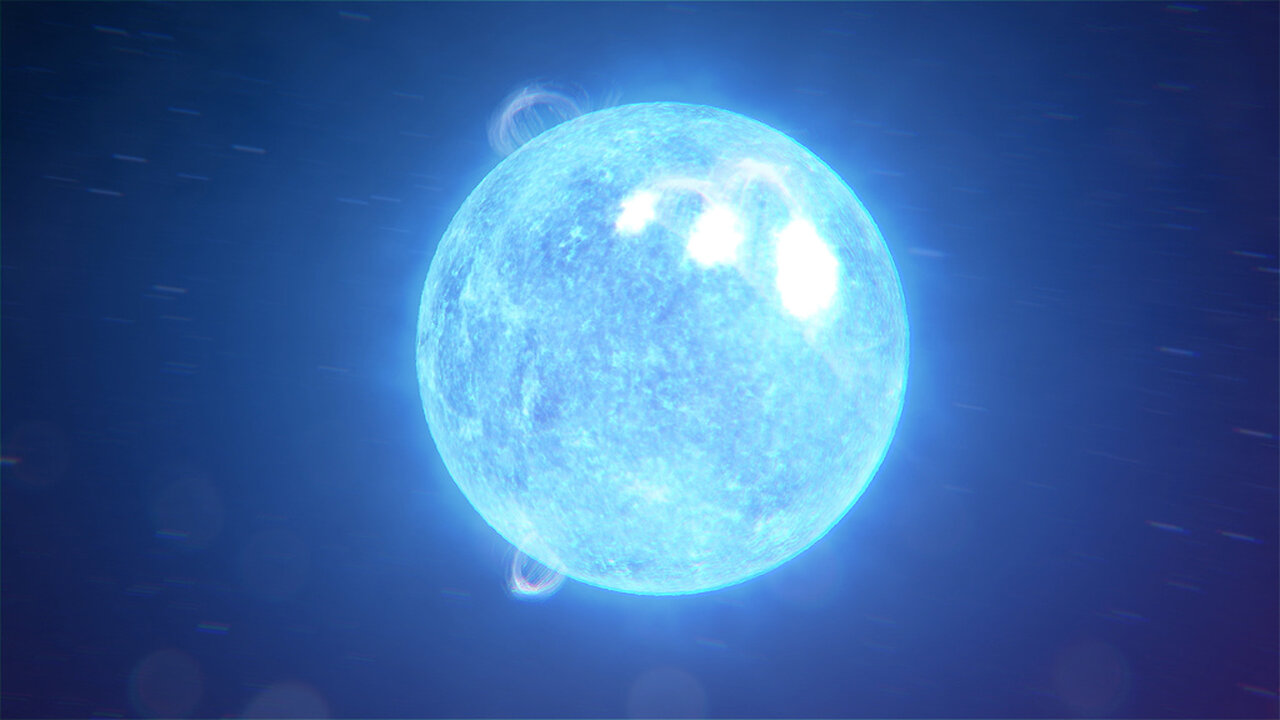Premium Only Content

NASA's NICER Tracks A Magnetar's Hot Spots
NICER tracked how three bright, X-ray-emitting hot spots slowly wandered across the object’s surface while also decreasing in size, providing the best look yet at this phenomenon. The largest spot eventually coalesced with a smaller one, which is something astronomers haven’t seen before
A magnetar is a type of isolated neutron star, the crushed core left behind when a massive star explodes. Compressing more mass than the Sun’s into a ball about 12 miles (20 kilometers) across, a neutron star is made of matter so dense that a teaspoonful would weigh as much as a mountain on Earth.
What sets magnetars apart is that they sport the strongest magnetic fields known, up to 10 trillion times more intense than a refrigerator magnet’s and a thousand times stronger than a typical neutron star’s. The magnetic field represents an enormous storehouse of energy that, when disturbed, can power an outburst of enhanced X-ray activity lasting from months to years.
On Oct. 10, 2020, NASA’s Neil Gehrels Swift Observatory discovered just such an outburst from a new magnetar, called SGR 1830-0645 (SGR 1830 for short). It’s located in the constellation Scutum, and while its distance is not precisely known, astronomers estimate that the object lies about 13,000 light-years away. Swift turned its X-Ray Telescope to the source, detecting repeated pulses that revealed the object was rotating every 10.4 seconds.
NICER measurements from the same day show that the X-ray emission exhibited three close peaks with every rotation. They were caused when three individual surface regions much hotter than their surroundings spun into and out of our view.
NICER observed SGR 1830 almost daily from its discovery to Nov. 17, after which the Sun was too close to the field of view for safe observation. Over this period, the emission peaks gradually shifted, occurring at slightly different times in the magnetar’s rotation. The results favor a model where the spots form and move as a result of crustal motion, in much the same way as the motion of tectonic plates on Earth drives seismic activity.
The team thinks these observations reveal a single active region where the crust has become partially molten, slowly deforming under magnetic stress. The three moving hot spots likely represent locations where coronal loops – similar to the bright, glowing arcs of plasma seen on the Sun – connect to the surface. The interplay between the loops and crustal motion drives the drifting and merging behavior.
-
 2:40:29
2:40:29
TimcastIRL
6 hours agoLA Riots Go NATIONAL, Spread Across US, Judge DENIES Newsom, Allows National Guard| Timcast IRL
170K126 -
 36:40
36:40
Michael Franzese
6 hours agoMob Life, Prison, Redemption: The Untold Story of Sean Scott Hicks
48.8K6 -
 7:02:49
7:02:49
SpartakusLIVE
8 hours agoVerdansk EASTER EGG || #1 King of Content entertains the PEASANTS, multitudes REJOICE
84.3K2 -
 52:57
52:57
Sarah Westall
7 hours agoMAHA the Real Deal or Just a Scam? Behind the Scenes in DC w/ Dr. Sherry Tenpenny
39.9K14 -
 11:03
11:03
Anthony Rogers
12 hours agoSMILE EMPTY SOUL Interview
8.89K -
 4:48
4:48
Efani: Secure Mobile SAFE Plan
4 days agoIs WiFi Calling Secure? Benefits vs Cons and things to consider
14.3K3 -
 18:45
18:45
Lacey Mae ASMR
9 hours ago $0.06 earnedASMR Tingly Personal Attention and Pampering For Sleep!
9.05K2 -
 7:24:05
7:24:05
MyronGainesX
22 hours ago $4.15 earnedLA Has Fallen! Protestors Takeover And Trump Sends More Troops!
112K38 -

Razeo
6 hours agoIf I'm not here, I'm there.
35.4K -
 1:41:57
1:41:57
megimu32
5 hours agoON THE SUBJECT: Jock Jams & Space Jam - Soundtracks of Our Childhoods
27.5K6